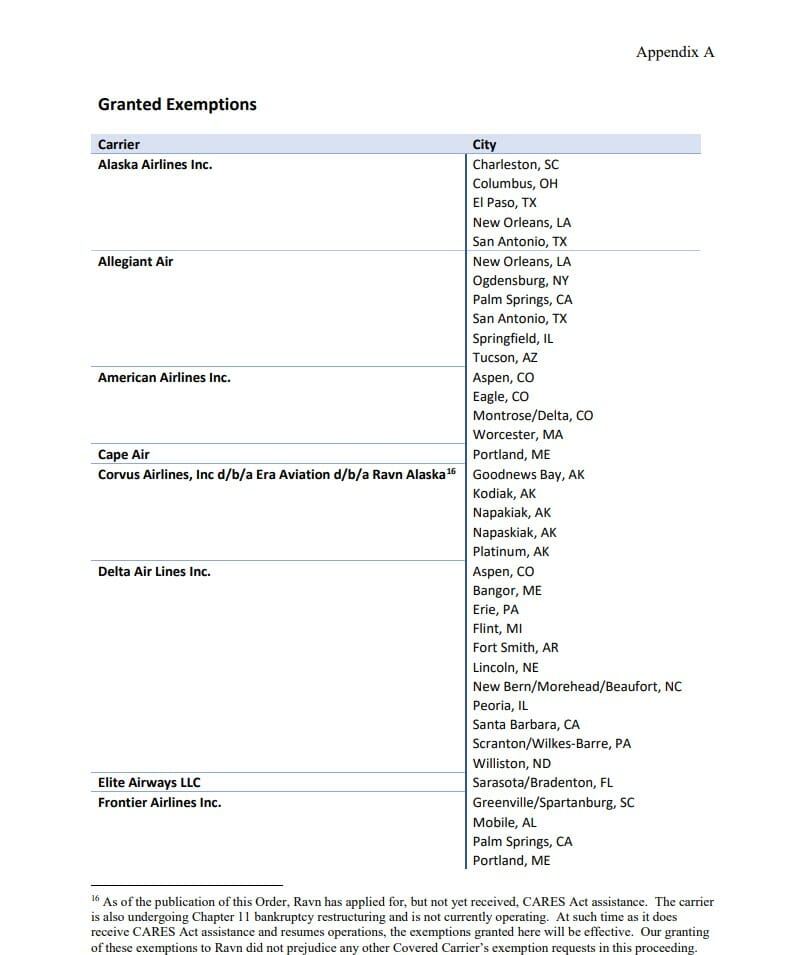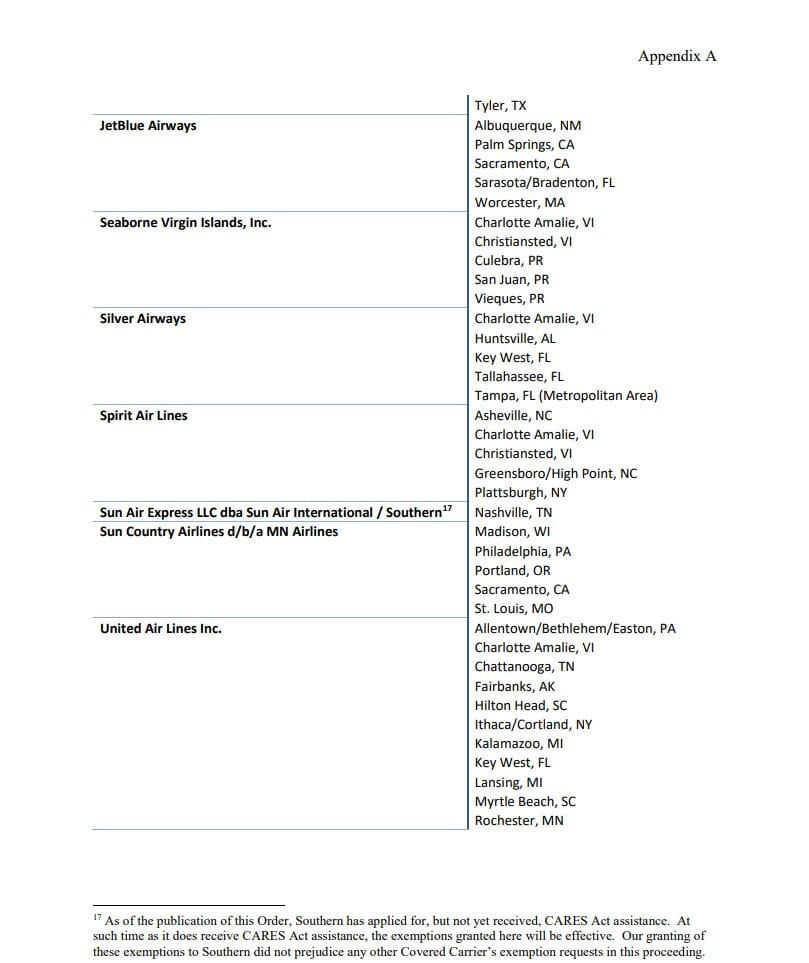Last Tuesday, I wrote about mainline and regional air carriers petitioning the U. S. Department of Transportation to suspend service to 62 airports. That petition was granted as requested in spite of objections by individuals, organizations and airports. This petition to the U. S. Department of Transporation was required to suspend service to airports where airlines received federal funds from the CARES Act. Please be aware, just because the airlines asked for and received permission to suspend service doesn’t mean that the airlines will exercise any or all of the airport suspensions that were granted.
The Airlines’ Position
Airlines need to average a load factor of about 70% or more to be profitable. Passenger bookings are down due to travel restrictions, passenger fear of flying and reduced airline seat capacity to accommodate social distancing. The airports most at risk at reducing or losing air service are regional airports and those airports where traffic is based on seasonal passenger loads. Smaller cities depend on regional flights to and from major airports to connect with mainline carriers. Since the pandemic began, airline load factors have been reduced to single digits and have just recently crossed into low double-digit load factors. Many airlines are finding it cheaper to park aircraft than to operate empty flights. Some airlines are getting creative by using “tag flights” where two nonstop flights become a single one-stop flight.
The CARES Act stipulated that in return for receiving federal funds, airlines would maintain schedules that were as practical and feasible if possible. The Act also mandated that airlines would not exercise forced layoffs of employees. The terms of the CARES Act are in effect through September 30, 2020. Airline schedules would need to maintain the following minimums to comply with the Act:
- Cities served five times per week or more would need to maintain at least one daily flight per day, a minimum of five days per week.
- Cities served with less than five flights per week would need to maintain at least one weekly flight.
- Cities with flights to multiple other points could see service reduced to a single destination, so long as that schedule complied with the two guidelines above.
Airlines that want to cut service levels outside of the above requirements could petition the U. S. Department of Transportation for relief.
The Decision By The U. S. Department Of Transportation
The requests of 15 airlines were combined into USDOT docket# DOT-OST-2020-0037 for service reductions to 62 U. S. airports. Yesterday, the petition was granted by the USDOT in its’ entirety on behalf of the petitioning airlines. Here are the service cuts that were applied for and granted:
In the case of Corvus Airlines, this airline has the remains of Ravn Airlines that is in bankruptcy.
What Does This Decision Mean?
It could mean a lot, very little or nothing at all. The airlines were granted permission to reduce service at these airports, that doesn’t necessarily mean that they will exercise that permission. With the term of the CARES Act in place, airlines need approval from the U. S. Department of Transportation to operate below the minimum service levels they agreed to in order to receive federal funds from the CARES Act. Again, those minimum service levels expire on October 1, 2020. I have a flight for Labor Day weekend on Alaska Airlines from Seattle to Charleston, SC. I called the airline today and I was assured that they have not made any decisions to drop any airports from its’ routes system. I was told that they will look again at these airports when the next schedule changes are finalized for the third quarter, 2020.
Final Thoughts
The airlines are in the process of covering their options during the CARES Act period. Just because these fifteen airlines received authority to suspend service does not mean that there will be large or even medium-size cuts to service for the airports and airlines listed in the DOT order. Normally, carriers can add or reduce service without DOT approval. The CARES Act changed that so reducing service below minimum CARES Act standards does require a specific exemption from the U. S. Department of Transportation. After September 30, 2020, the airlines are back to making their own decisions including the ability to layoff employees. The biggest threat from the airlines would result in a lack of air service to and from regional airports that connect to mainline flights operating out of the major airports.








